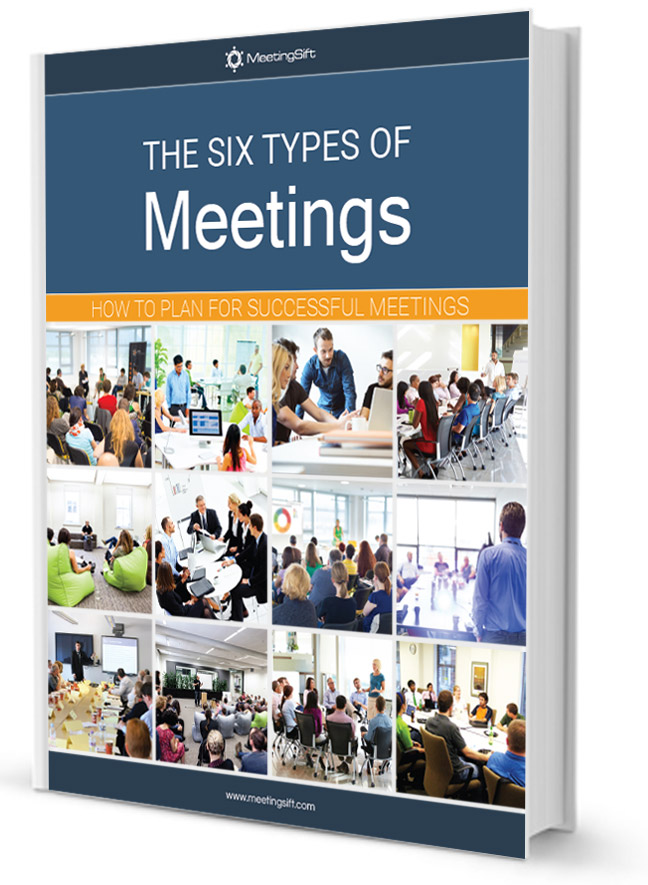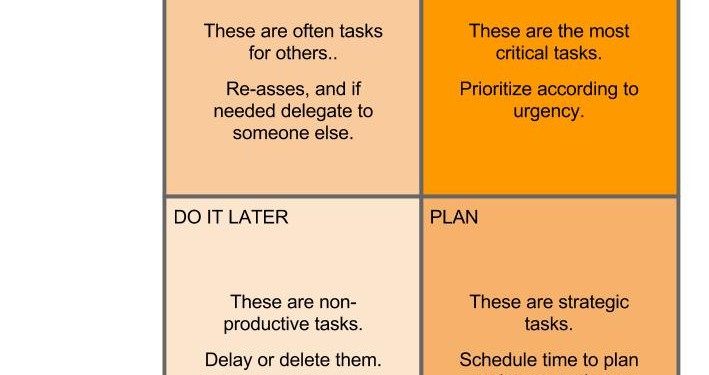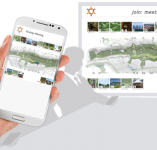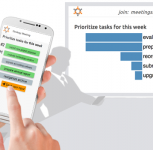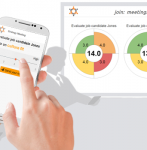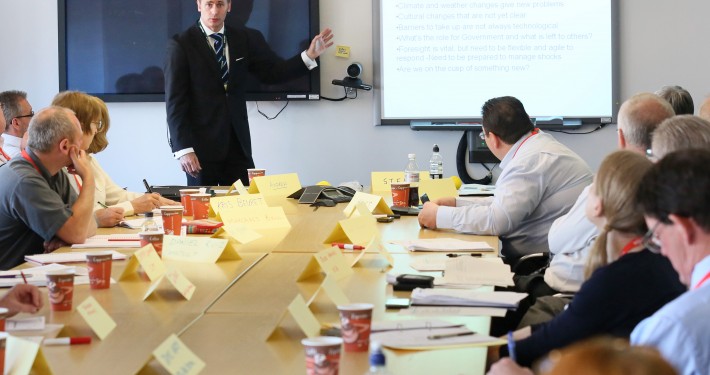There you are, having masterfully lead the perfect meeting. You’re done, right? You scan the faces of the attendees, noting how pleased they are with the results. You look for your scribe—the notetaker. But he isn’t there. He was there, off to the side, in the beginning. You begin to panic, for you are well aware that, without detailed Meeting Minutes for this high-level group (any group, really), you are…toast.
Important functions of meeting minutes
Meeting Minutes serve a multitude of functions essential to a meeting’s overall success. They provide a record—a historical accounting—of everything of import that took place during a meeting, from logistics, purpose, attendees, deliberations, presentations, and outcomes, to recommendations, assignment of responsibilities, and future considerations and meetings.
Meeting participants can use meeting minutes to help ensure they did not miss vital points. These accounts can help avoid misunderstandings, whether due to selective memory, inattentiveness, or simply not hearing or understanding a delivery.
Non-attendees can gather the weight of the meeting, including how far-reaching the meeting’s effects might be, simply by glancing at the meeting’s purpose, who attended (was your boss there, the company president, the HR director?), and how many people were there. The details of the proceedings, if distributed in a timely manner, keep non-attendees informed soon enough such that they can be a vital part of the process though they were not in the meeting.
Stakeholders commonly have a deep and vested interest in outcomes and how they were arrived at—no detail left unstated. Because stakeholders are those people, companies, or agencies who are directly, and often significantly, affected by the outcomes of a meeting, the devil is truly in the details for them. For example, a meeting having a profound effect on a company’s bottom line will often find the stakeholders as CEOs, CFOs, department heads, investors, clients, and key staff. Given that not all of these stakeholders are necessarily at the meeting, they rely heavily on that detailed report of proceedings and outcomes. If certain information is unclear, incomplete, or missing from meeting minutes, this can result in stakeholders making potentially disastrous decisions that run counter to the best interests of the company, or companies, involved. Conversely, imagine that the meeting minutes before you—a stakeholder—gives you a clear picture of what took place. Now you can rest assured your decisions will be grounded in reality.
For meeting minutes details matter
According to the U.S. Department of Health and Human Services, the most effective meeting minutes add depth beyond simply stating the outcome regarding a decision that was made.
Anyone reviewing the meeting minutes should be able to understand the logic, the salient factors and debate used in arriving at the decision, and whether alternatives were considered.
Not too many years back, meeting minutes dealt in brevity, with thin references to procedural accountings—more of a summary statement for each item discussed. This has changed, especially with the advent and advancement of technologies in their ubiquitous forms.
There is an additional legal requirement for specific types of meetings. For example, in most jurisdictions, it is mandated that board meetings have meeting minutes. Many government entities must subscribe to sunshine laws—laws that guarantee transparency and availability of the proceedings within a meeting. That is, the details must be sufficient to accurately represent the proceedings, and hold up in court if need be. If you are the party responsible for the creation of clear, concise, and complete meeting minutes, especially with the knowledge that they become legal documents, then comprehensive meeting minutes are your ticket. In fact, regarding meetings having sunshine law requirements, the public becomes a stakeholder. Your meeting minutes could become available via the Freedom of Information Act. Know that provisions for closed-door meetings do exist, where the meeting minutes are not made available outside of certain circles.
“Paper trails” (meeting minutes from one meeting to another) may find minutes from multiple meetings being scrutinized. It may be that legal improprieties are suspected, perhaps including a conflict of interest by a voting member in a meeting. These details, from meeting to meeting, must then necessarily be complete, conclusive, and without error or question.
If a particular discussion or decision is the result of discussions through a series of meetings, ensure that the meeting minutes use the same, or at least similar, title from one meeting to the next in order to more easily follow the threads as they progress from meeting to meeting.
Reminders of responsibilities
One of the many benefits of meeting minutes is how they help keep attendees (or non-attendees who were volunteered) on track by reminding them of their role in a project. If the various roles and prominent details are left strictly to memory, to what one or more attendees “think” is supposed to be done, then the chances of incomplete or incorrectly completed tasks, and missed deadlines, are greatly increased.
How to capture meeting minutes
Meeting minutes are best written by someone not directly involved in the discussions. How many of us have attempted to take notes during a meeting, subsequently missing an important point someone made? Preferably, this should be someone who is familiar with the company, the culture, the key attendees. Also, someone who is no stranger to meeting minutes formats, templates, language, and tone is helpful.
Three approaches to the notetaking medium: handwritten, computer-typed, and voice recordings
Handwritten copy cannot approach keeping up with human talking, considering that we can talk and hear comfortably in the area of 150 words per minute, on average. Typing brings us up to 50-80 words per minute, again on average (yes, speeds upward of 100-120+ are attained by some). Speech recognition software brings us up to roughly 100 words per minute, with a 95% efficiency. Keep in mind that the scribe is not required to capture every word spoken. Rather, the essence (a significant essence) is what counts. For example, “Anne said the next meeting’s purpose is to determine the budget available” only needs to be recorded as “Anne – Next meeting purpose: determine budget.” Six words vs. twelve, and a quicker read for anyone reading the report.
Notes from breakout groups
One person within each group will have the responsibility for taking notes These notes must be submitted to the scribe in charge of the meeting minutes. If these can be handled electronically, it improves the likelihood that the meeting minutes scribe can read the notes, given potential legibility issues with handwritten notes by people who may not be used to taking notes for others. This also speeds up creation of the final report.
How to achieve the best meeting minutes
In order to produce the highest quality meeting minutes, there are essentially three sets of considerations that will significantly improve the outcome: pre-meeting preparation; during the meeting; post-meeting.
In advance of the meeting / pre-meeting preparation
Days in advance of the meeting, prepare a template you can use for your notes. Alternatively, on your computer make a copy of the agenda (preferably the more-detailed agenda used by the meeting leader), leaving room to type in notes.
Regardless of your approach, ensure that your template includes a place for each of the following:
- Meeting’s date and time
- Purpose
- Meeting leader’s name
- Attendees’ names (secure a list if possible)
- Plenty of room to record the essence of discussions including results, decisions, assignments
Immediately before and during the meeting
- Check off attendees’ names as they enter the meeting room
- What do you do if you don’t understand something well enough to enter it into the notes?
- If it is relatively minor, at a minimum make a note as to what is being discussed, with enough detail to help get clarification after the meeting.
- If it is vital that you capture what you didn’t hear or understand, ask, then and there. According to a Harvard Business Review article, “How to interject in a meeting,” simply have a few break-in sentences in your quiver, and don’t be afraid to use one of them (preferably no more than once in a meeting). For example, you state you are not entirely sure you followed that last comment, asking for clarification.
Post-meeting
- Immediately after the meeting, ensure your notes make sense and are complete. You might be unpleasantly surprised at how quickly details disappear from one’s memory as you become involved in other aspects of your life.
- As soon after the meeting as possible, have the meeting lead review the meeting minutes for accuracy
- Distribute the meeting minutes to attendees within 24 hours. Don’t wait, as days that turn into weeks can result in lost effectiveness (out of sight, out of mind). Attendees who receive feedback quickly feel they accomplished something.
- Who receives the meeting minutes? Remember, this information is commonly useful, if not mandated, for an audience well beyond those who attended the meeting. Check with the meeting leader as to the distribution list.
Editing the Meeting Minutes
A National Institutes of Health (NIH) protocol review paper raised the question of whether the meeting leader, or any directly-related governing body, should be allowed to edit the minutes prior to posting the report. In many cases, this question is governed by law. The obvious concern is that the contents must factually represent the meeting’s proceedings. Again, check with the meeting leader.
DOs and DON’Ts for the scribe
In your role as meeting scribe, DO ensure that your focus is not attenuated by outside influences. It is easy to miss an important comment if your mind’s attention drifts.
DON’T arrive at the meeting at the last minute. Setup delays may cost you notes you didn’t want to miss.
DO ensure that your electronic device is logged in well in advance, functions properly, and has connectivity (WiFi, cell phone tower, e.g.).
DON’T take your position, your responsibilities, lightly.
Get instant meeting reports
MeetingSift automatically summarizes participant contributions, decisions, and outcomes in reports ready for sharing immediately after the meeting.

